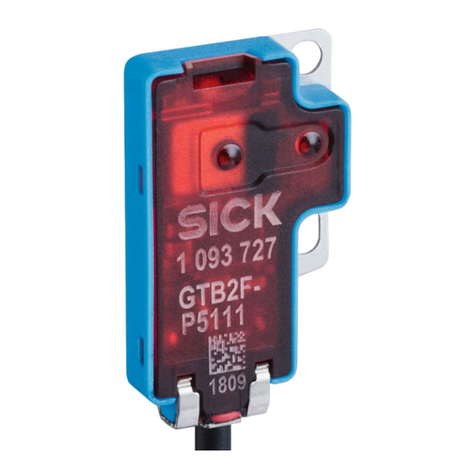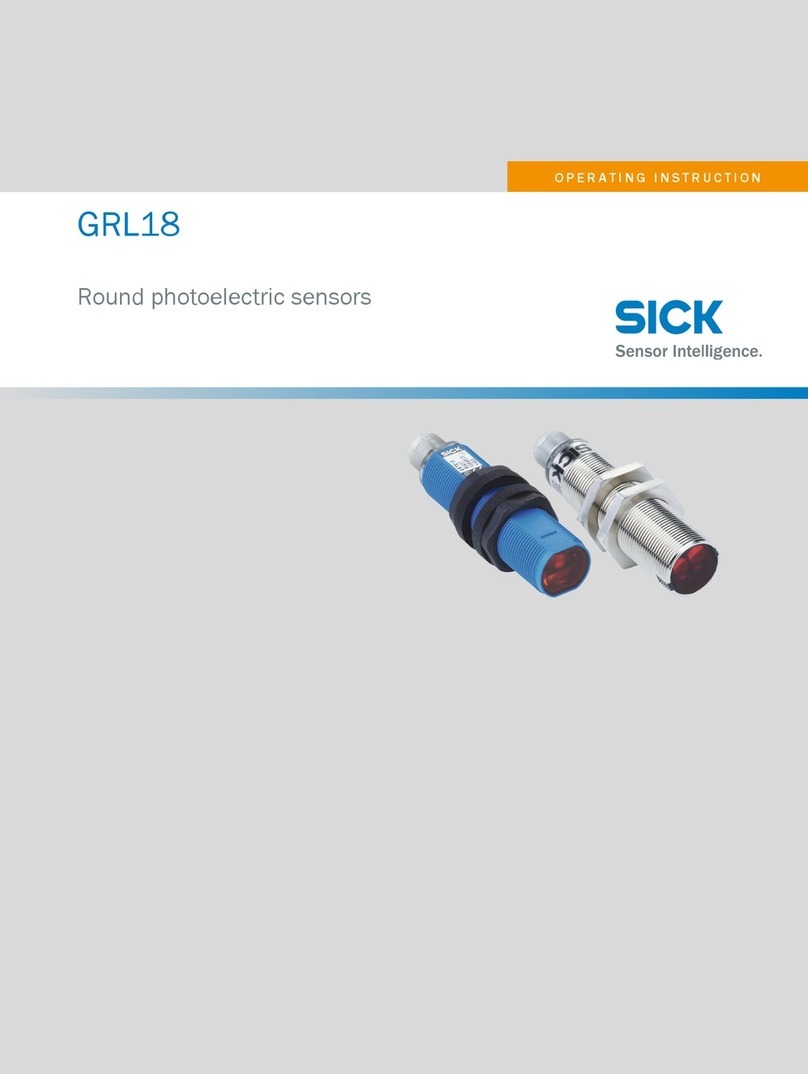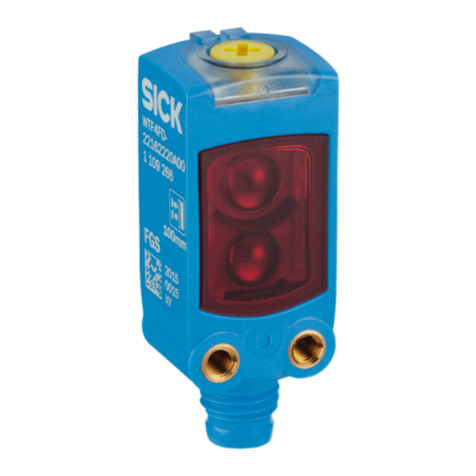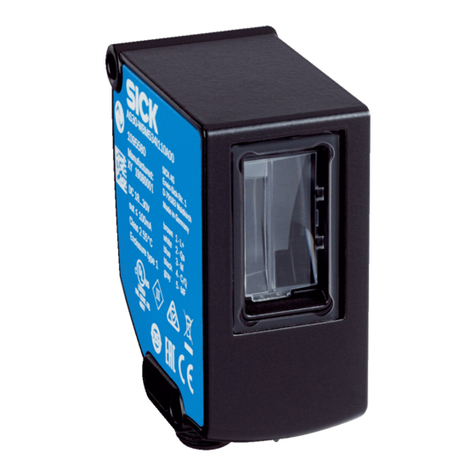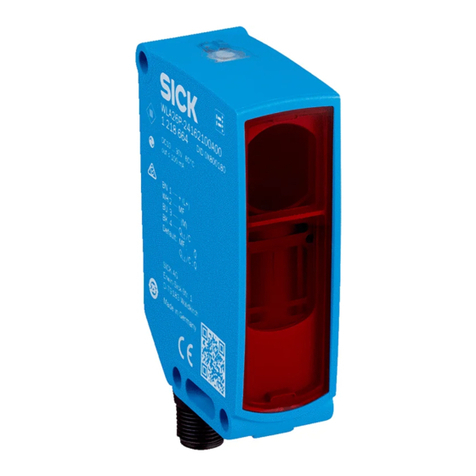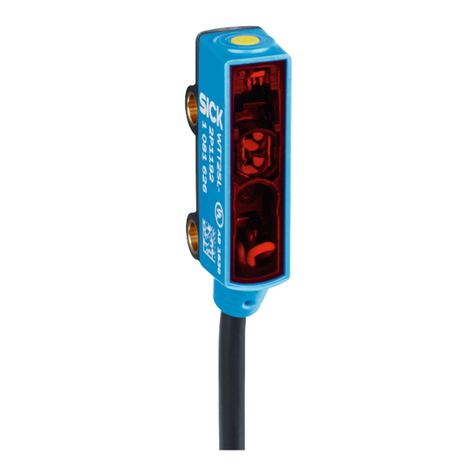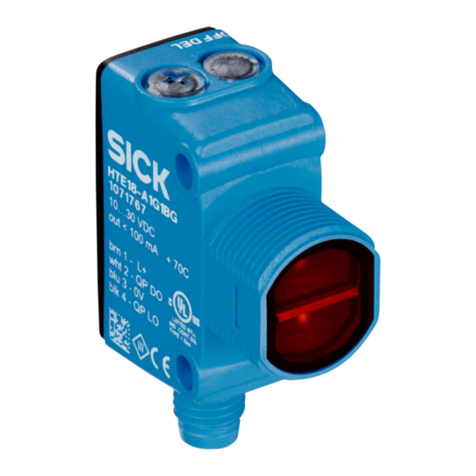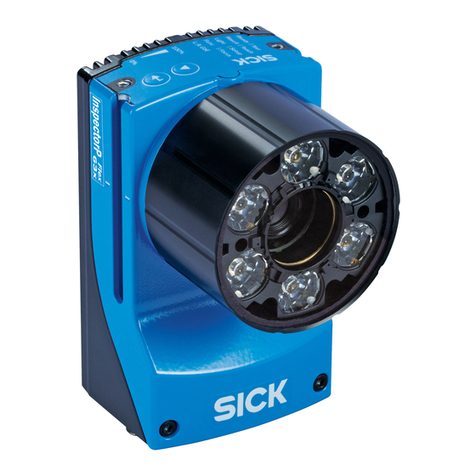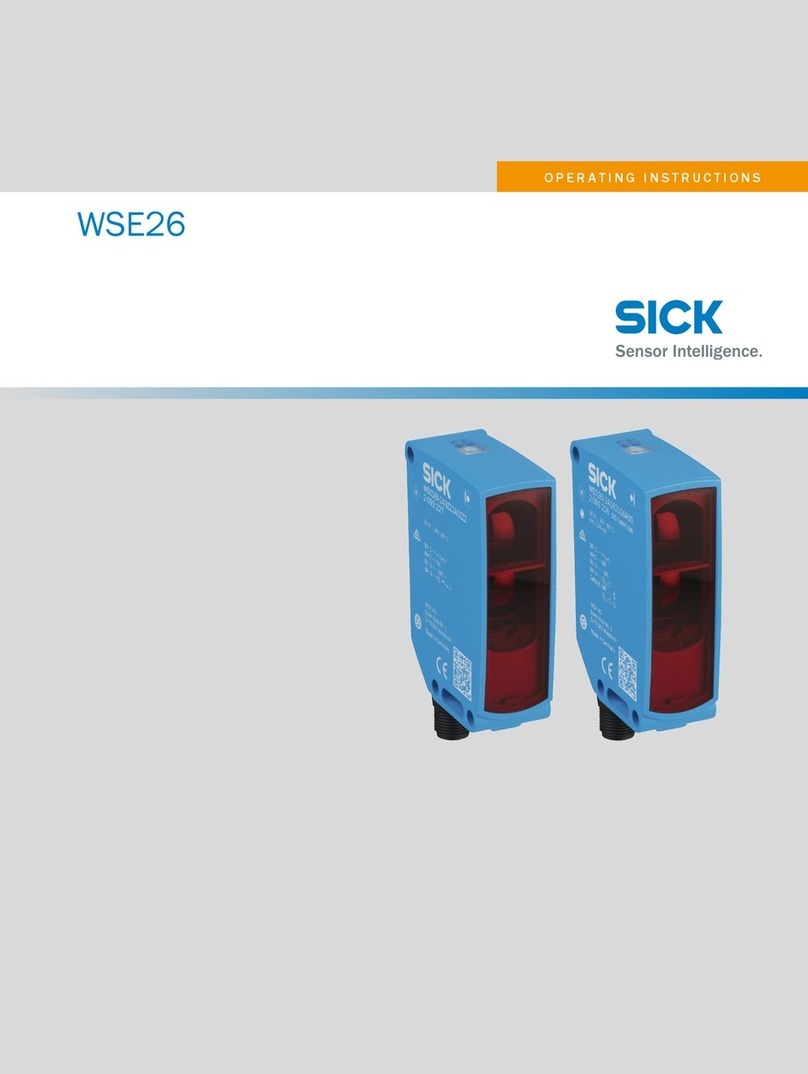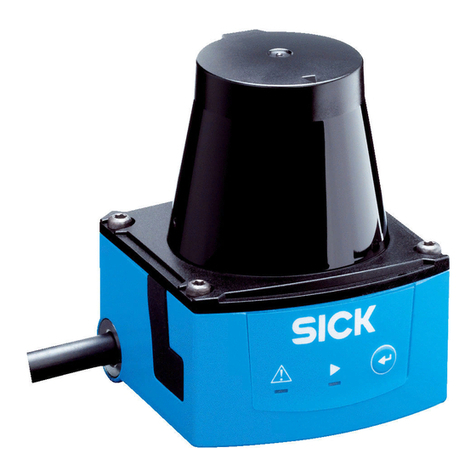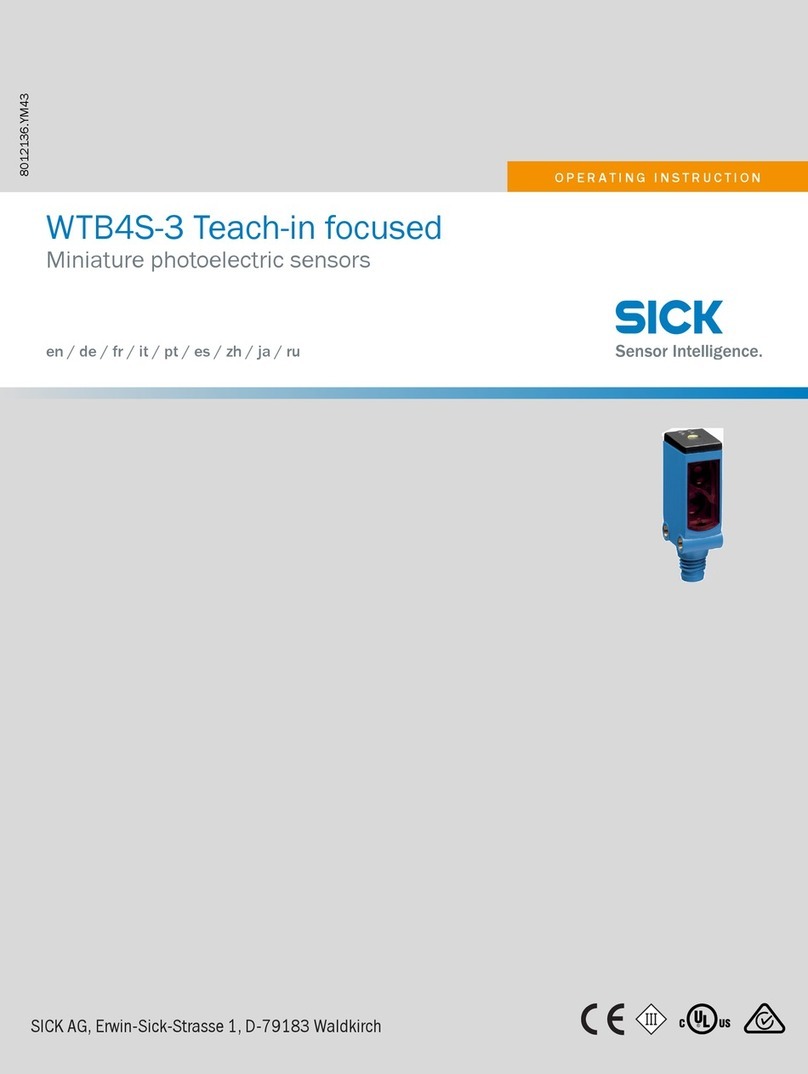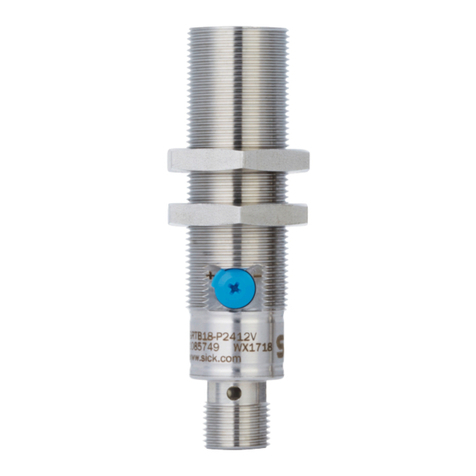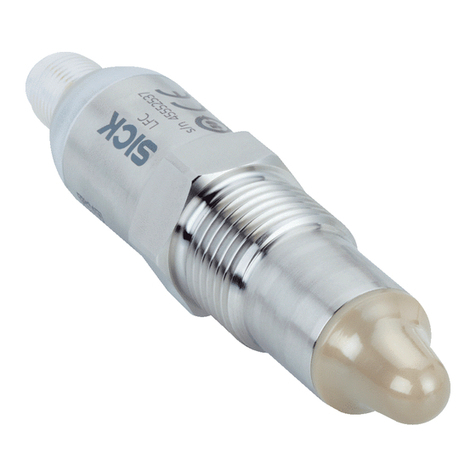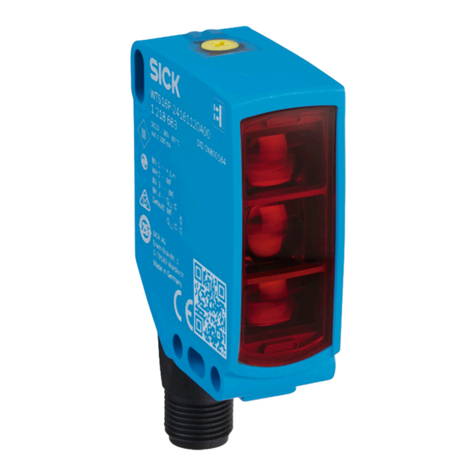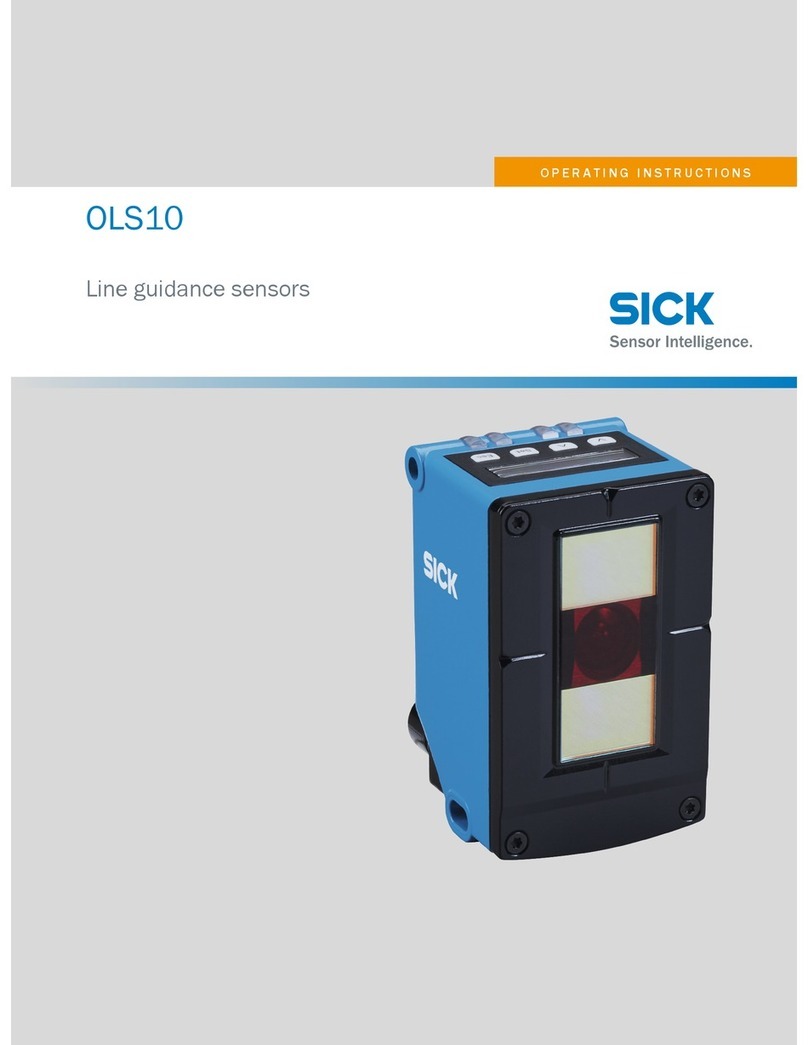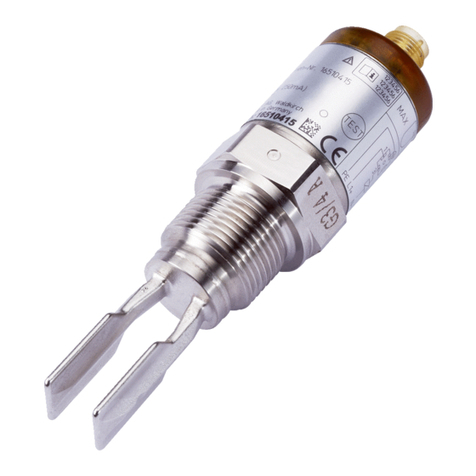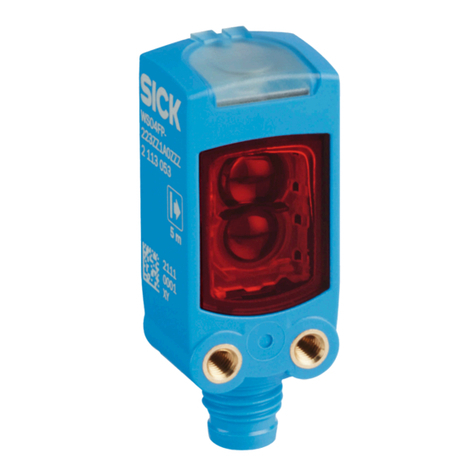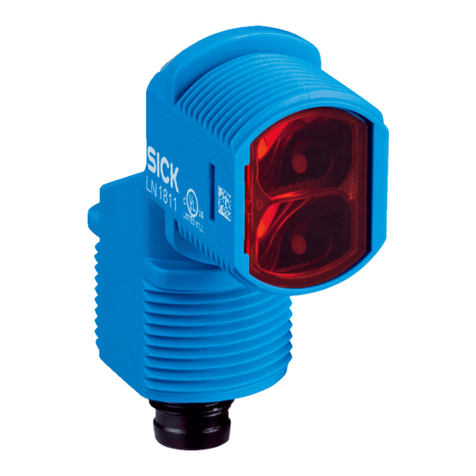
Check the application conditions: Adjust the sensing range and distance to the object or
background and the remission capability of the object according to the corresponding dia‐
gram [see figure 10] (x = sensing range, y = monitored area between the set sensing range
and background suppression as a % of the sensing range (object remission/background
remission)). Remission: 6% = black 1, 18% = gray 2, 90% = white 3 (referring to stand‐
ard white as per DIN 5033). We recommend making the adjustments using an object with
a low remission.
The minimum distance (= y) for background suppression can be determined from diagram
[ see figure 10 1] as follows:
Example: x = 150 mm, y = 20 => 20% of 150 mm = 30 mm. That is, the background is
suppressed at a distance of > 180 mm from the sensor.
25
y
x
0
20
15
10
5
1
2
3
6%/90%
18%/90%
90%/90%
Example:
Sensing range on black, 6%
x = 100 mm, y = (10% of 100 mm) =10 mm
100
(13.94)
50
(1.97)
150
(5.91)
250
(9.84)
200
(7.87)
300
(11.81)
0
Minimum distance between set sensing range and
background (white, 90%) in % of sensing range
1 Sensing range on black, 6 % remission
2 Sensing range on gray, 18 % remission
3 Sensing range on white, 90 % remission
Distance in mm (inch)
yx
white background (90%)
Figure 10: Sensing range of up to 300 mm
Use figure 11 and Table 3 to check the function. If the switching output fails to behave in
accordance with Table 3, check the application conditions. See section Fault diagnosis.
3Sensing range setting
Sensor which it is not possible to set: The sensor is adjusted and ready for operation.
The sensing range is adjusted with the potentiometer (type: 270°). Clockwise rotation:
sensing range increased; counterclockwise rotation: sensing range reduced. We recom‐
mend placing the object within the sensing range, e.g. see table 4. Once the sensing range
has been adjusted, the object is removed from the path of the beam, which causes the
background to be suppressed and the switching output to change [see table 3].
Table 4: Sensing range setting
COMMISSIONING 6
8021184 | SICK
Subject to change without notice 9
